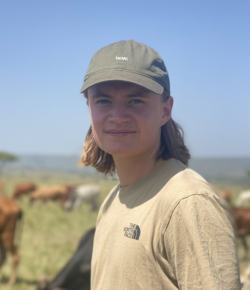2022: A Coexistence to Ruminate on: Response of Wild Herbivores to Domestic Cattle in a Rotational Grazing System in the Mara Region, Keny

Master student Ask Herrik from Department of Biology at Aarhus University is now in Mara North to collect data on the project A Coexistence to Ruminate on: Response of Wild Herbivores to Domestic Cattle in a Rotational Grazing System in the Mara Region, Kenya.
Objective
The aim of the study is to examine the effect of domestic cattle in a rotational grazing system on the wild herbivore species of the Mara North Conservancy (MNC), Kenya. More specifically, I will investigate how the wild herbivores respond to the presence of cattle by looking at their densities in different sectors that have been recovering from grazing by cattle for varying time periods. By this means, I will examine how the cattle either outcompete or facilitate the presence of different wild herbivore species. From the results of this project, I will further assess the efficiency of the rotational grazing system of the cattle in keeping a sustainable grazing pressure that safeguards both the livelihood of the Maasai pastoralists and the existence of the local wildlife.
Background
MNC has put a limit to the number of domestic cattle in the conservancy to prevent overgrazing. In addition, MNC has implemented a rotational grazing system, where the cattle have been gathered into few, large herds that are moved between sectors monthly. This system is a proxy for the natural migration of large herbivores and causes short periods of intense grazing and long periods of vegetation recovery. The rotational grazing system furthermore creates cattle-free refuges for the wild herbivore species. The rotational grazing system creates the perfect conditions for examining how wild herbivores respond to the presence of domestic cattle.
Method
The study will use observational data gathered by driving through strip transects to estimate the densities of different wild herbivore species. The strip transects will be distributed across MNC and divided into seven groups based on time since grazing by cattle. The length of the transects will be around 1 km and the width will be 200 m to each side of the vehicle. A Range Finder will be utilized to determine the distance to each observation, which will then be logged as a GPS location. The study will additionally use two data sets from 2019 and 2020, which were collected using the same method, to analyse and compare the results.
Fieldwork
Data collection will be conducted in MNC and will stretch over 3 months from February to April 2022. During the fieldwork, I will be staying at Karen Blixen Camp that has sleeping facilities for researchers in MNC.
Supervisors
Robert Buitenwerf and Jens-Christian Svenning